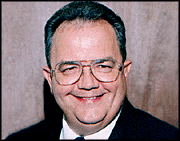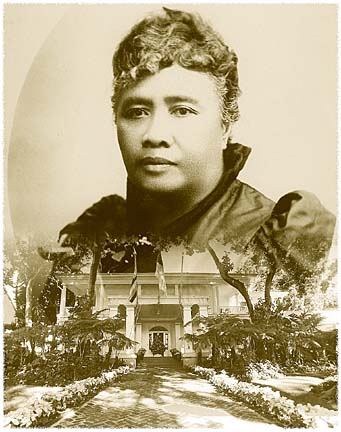


Gathering Place
Governor and Mrs. Benjamin Cayetano intend to be the last people to reside under the roof of historic Washington Place; the home of Hawaii's governors for 80 years. The Cayetano plan calls for governors and their families to reside in new quarters to be built on an acre of tropical grounds, mauka of the mansion, where a caretaker's cottage is now situated. Plan for mansion will
help heal past hurts
Washington Place would still be considered the Governor's Mansion since future first families would hold official functions on the lanai and ground floor. The second floor would be dedicated to public displays of the history of the 153-year-old home.It is a well-thought-out plan. It should ease the discomfort that many Hawaiians may have felt at having governors of the American Territory and later the state of Hawaii living in the former home of a queen whose overthrow was engineered in part by American interests. The displays on the second floor will open a window on the past, allowing residents and visitors to understand more about a place where so many crosscurrents of Hawaii's history have swirled.
Ship captain John Dominis started building the home for his wife and son in the early 1840s. They had moved here from Schenectady, N.Y. The house wasn't finished before legal conflicts involving the property, and a lawsuit filed by an Englishman against Dominis, helped trigger a five-month takeover of the Hawaiian Kingdom by a British admiral in 1843.

Three years later, as the house neared completion, Captain Dominis was lost at sea on a voyage to China. His widow, Mary, was forced to rent out rooms in the mansion to support herself and her teen-age son. One of her renters was Anthony Ten Eyck, the American diplomatic representative to Hawaii. Since the Dominis home thus served as the American legation, King Kamehameha III decreed that the house be called Washington Place. He further decreed that its name could never be changed.Washington Place had long since reverted to a private residence when, in 1862, the late ship captain's son, John Owen Dominis, brought his bride to live there. She was the Hawaiian Princess Lydia Kamaka'eha. Twenty-nine years later she would become Queen Liliuokalani, who spent much of her time at Washington Place even after she ascended the throne in Iolani Palace. Seven months into her reign, her husband died. Alone she struggled to strengthen her power as monarch but her efforts made enemies.
In January 1893, powerful business interests supported by American diplomatic representative John Stevens overthrew Hawaii's monarchy. In despair, the Queen left Iolani Palace and returned to Washington Place. Following an unsuccessful counter-revolution in 1895, Liliuokalani was imprisoned for eight months in the palace and then was paroled back to Washington Place under house arrest for another five months.
She sometimes stayed at her other properties on Oahu, but Washington Place remained Liliuokalani's home until she died there Nov. 11, 1917. A few months before, she had ordered the American flag raised above Washington Place for the first time in 30 years. It was her way of honoring five Hawaiian sailors who had died when their U.S. ship was sunk by a German submarine. Two years after her death the Territorial Legislature approved the purchase of Washington Place to serve as both the Governor's Mansion and a monument to Liliuokalani.
Curator Jim Bartels says not only will documents and artifacts about Washington Place be displayed on the second floor, but those displays will change as research, funded by an admission fee, uncovers new details about the role of the mansion in Hawaii's history.
The proposed location for the new governor's residence is on property that never belonged to the Queen. The one-acre tract was purchased in 1946 to square off the mansion's grounds. The plan is to break ground in July so that the residence can be ready for Hawaii's next first family in January 2003.
The new residence and the work to prepare Washington Place for its new role will cost an estimated $3 million. Two million will come from private donations raised by the new nonprofit Washington Place Foundation. The governor and first lady have asked the Legislature to provide $1 million in public funds.
For all that we can learn, and for healing century-old hurts, it's a bargain.
Ray Lovell is a writer
and former broadcast journalist.